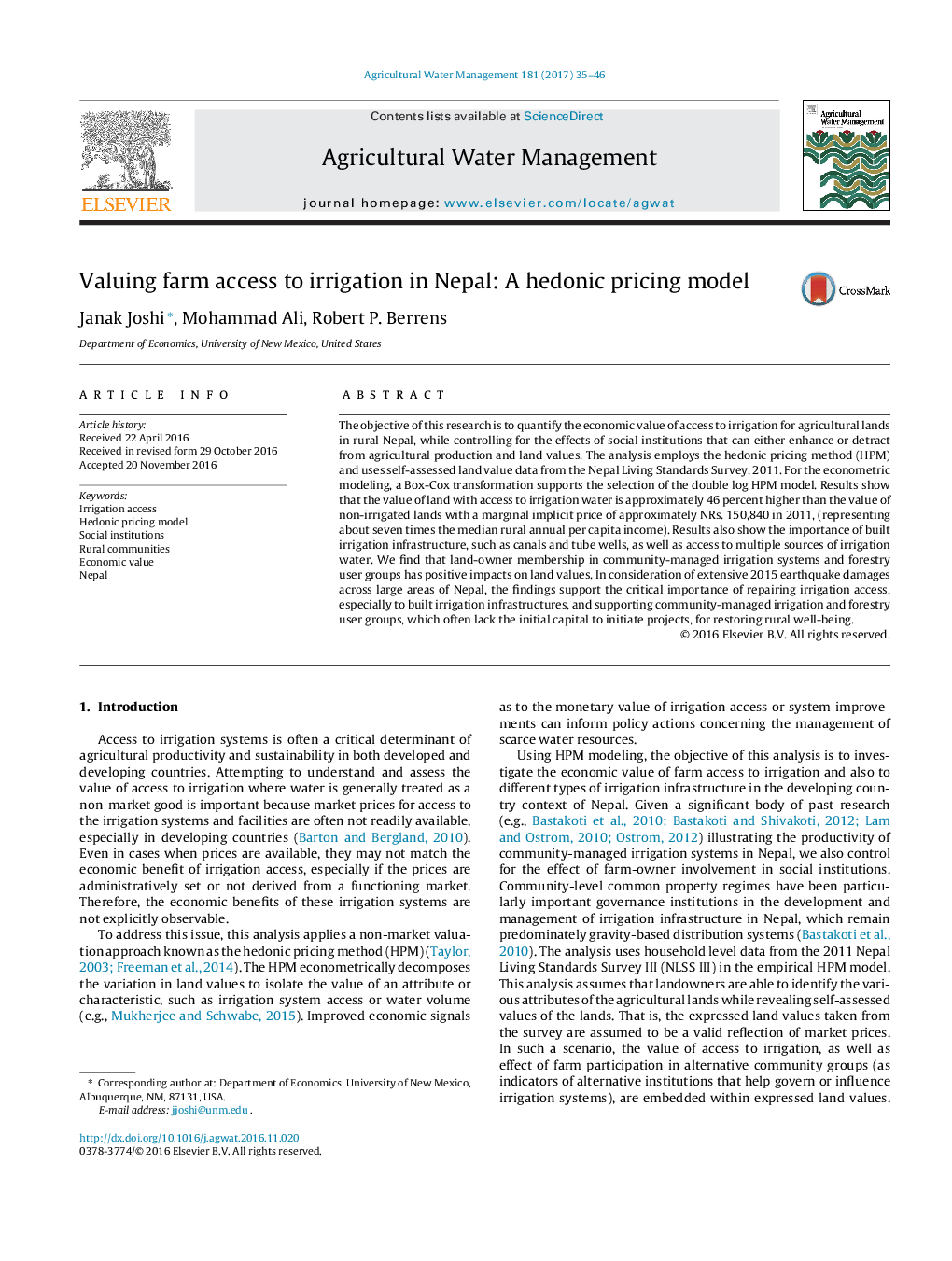| Article ID | Journal | Published Year | Pages | File Type |
|---|---|---|---|---|
| 5758572 | Agricultural Water Management | 2017 | 12 Pages |
Abstract
The objective of this research is to quantify the economic value of access to irrigation for agricultural lands in rural Nepal, while controlling for the effects of social institutions that can either enhance or detract from agricultural production and land values. The analysis employs the hedonic pricing method (HPM) and uses self-assessed land value data from the Nepal Living Standards Survey, 2011. For the econometric modeling, a Box-Cox transformation supports the selection of the double log HPM model. Results show that the value of land with access to irrigation water is approximately 46 percent higher than the value of non-irrigated lands with a marginal implicit price of approximately NRs. 150,840 in 2011, (representing about seven times the median rural annual per capita income). Results also show the importance of built irrigation infrastructure, such as canals and tube wells, as well as access to multiple sources of irrigation water. We find that land-owner membership in community-managed irrigation systems and forestry user groups has positive impacts on land values. In consideration of extensive 2015 earthquake damages across large areas of Nepal, the findings support the critical importance of repairing irrigation access, especially to built irrigation infrastructures, and supporting community-managed irrigation and forestry user groups, which often lack the initial capital to initiate projects, for restoring rural well-being.
Related Topics
Life Sciences
Agricultural and Biological Sciences
Agronomy and Crop Science
Authors
Janak Joshi, Mohammad Ali, Robert P. Berrens,
